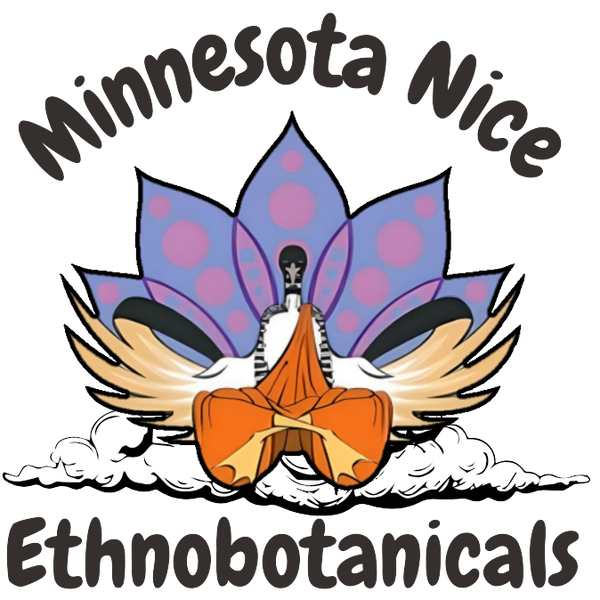
How much religious history was influenced by the consumption of Amanita Muscaria Mushrooms?
Share
Have you ever heard of a mushroom being named "the fairy tale fungus"? Arguably one of the most recognizable toadstool species, the Amanita Muscaria mushrooms are the mascot of the fungi world. With a deep-red cap and white colored dots, it is no wonder why they are distinguishable. They are often illustrated in popular cultures, such as being the Super Mushroom in the Mario franchise and being drawn in classic children's books. Despite its seemingly vulnerable and cute appearance, when raw, this mushroom is highly poisonous, so thinking twice about consumption is advisable.
Amanita Muscaria mushrooms have a fascinating and rich history. A history morphed from the origins of Christian Christmas celebrations to being an ancient Vedic culture's mythical Soma beverage. Amanita Muscaria mushrooms have been with us throughout most of our history.
From the Romans and Vikings to the Koryaks and the early Vedic period. It comes with little surprise that the consumption of Amanita Mushrooms has significantly influenced religious history. So, let’s take a quick look back in time and see the historical journey and some of the cultures that have been helped shaped by the enchanting Amanita Muscaria mushroom.
Christianity: The Holy Mushroom
The historical origins of the biggest religions that we know of were founded on the ideals of consuming psychedelics. A theory that often comes with controversy.
According to some and controversial to others, they argue that Christianity was essentially the product of a sex-and-mushroom cult, the Amanita mushrooms being essentially a gateway to understanding God. In any case, it is a known fact that many early Christianity artworks contained the iconic red caps and white spots of Amanita Muscaria engraved into multiple monasteries.
Furthermore, did you know that it is thought that some of the relics in the Bible were code for psychedelics? Take the following for example, “Eat of my flesh” did not mean bread, so we thought, but rather a psychedelic mushroom. Again, however, this could all be a speculation of some sort.
Many researchers often wonder about the true meaning behind the consumption of these mushrooms in Christianity. Yet, it is believed that the use of psychedelics can bring the direct experience of divinity back into religion.
The Divine Mushroom of Immortality
The term "Aryans" was a name originally given to those who spoke an archaic Indo-European language, settling approximately 4000 years ago in prehistoric times in the northern Indian subcontinent and ancient Iran. They were particularly meticulous warriors and grain-growing people with a tribal religion, holding a hereditary priesthood that consisted of a collection of legendary gods, including the infamous Soma.
With origins tracing back to central Asia, they split into three distinctive groups: spreading out to the Valley of Indus (Afghanistan) and the other, Iran. All the while passing down and preserving their religious knowledge during the process.
Rigveda, of the Indian Hindus, was one of the most significant texts of the Hindu tradition. Avesta of the Iranian Zorasters was a sacred book containing the primary collection of religious texts of Zoroastrianism. You might be wondering, what makes our Amanita Muscaria mushrooms relevant in all of this?
Truth beholds, both religions consider the Amanita mushrooms to be blessed plants, believed to have hallucinogenic properties, and used in religious ceremonies. In Hindu sacred texts (the Rigveda), the Amanita mushroom was known as Soma, with its literal meaning being “the creator of Gods”, whilst in the Avesta, it was named Haoma.
So, why did they consider these mystical mushrooms so sacred?
In Hindu mythology, Soma represents the god of the moon. Drawn by exquisite white horses, he rides through the sky in a chariot. Soma was also the name of the elixir of immortality (which was most likely dried Amanita Muscaria mushrooms ground with water). Only those worthy enough were allowed to drink it, providing them with feelings of ecstasy.
Religious traditions of the indigenous people of Siberia
In pre-Christian religious traditions, the Amanita mushrooms were frequently used by the indigenous people of Siberia due to being a known entheogen. Normally in the west, only practicing shamans were allowed to take this magical mushroom.
However, in eastern Siberia, everyone was allowed to take it, even recreationally and not only for religious rites. For example, dancing and drumming were a big part of their rituals, and upon taking the mushroom, it allowed them to achieve trance-like states, which normally could only be accomplished through dancing and drumming.
So, how did Amanita Mushrooms influence religious history?
From being unearthed from early Christian artwork to being a sacred plant named after a Hindu mythology god. It is, without a doubt, known that Amanita Muscaria did have some sort of influence on the religious histories of many cultures. To what extent remains predominantly unknown, but nevertheless, an interesting topic for researchers to explore.
